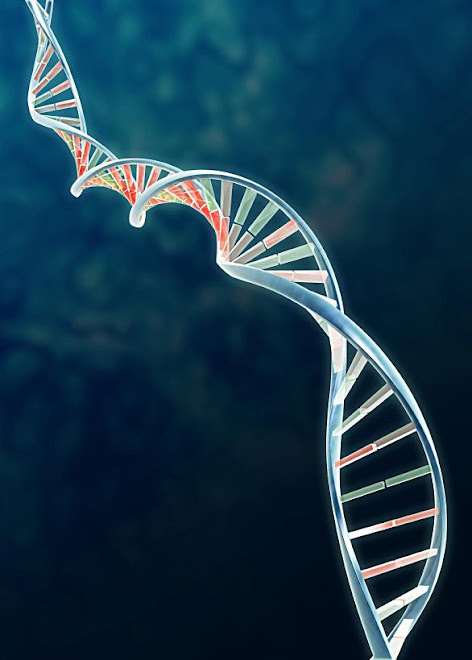 What is DNA, and how it determine our characteristics?
What is DNA, and how it determine our characteristics?DNA is basically a long molecule that contains coded instructions for the cells. Everything the cells do is coded somehow in DNA - which cells should grow and when, which cells should die and when, which cells should make hair and what color it should be. Our DNA is inherited from our parents. We resemble our parents simply because our bodies were formed using DNA to guide the process - the DNA we inherited from them.
First we must learn how DNA is structured. DNA is a long molecule, like a chain, where the links of the chain are pieces called nucleotides . There are four different types of nucleotides in DNA which we'll call 'A', 'G', 'C' and 'T'. These four are all that's necessary to write a code that describes our entire body plan.
DNA chains are made by connecting those nucleotides together via chemical bonds. At right is a diagram showing four nucleotides connected to form an oligonucleotide. Double-stranded DNA is simply two chains of single- stranded DNA, positioned so their "bases" can interact with each other. At left is a cartoon depiction of double-stranded DNA.
The bases in the middle "pair up" with bases on the opposite strand, so that a type 'A' nucleotide is always opposite a type 'T', and 'G' is opposite 'C'. The attraction between the paired nucleotides is fairly weak, but when there is a whole string of them, it adds up to enough strength to hold the strands together.
First we must learn how DNA is structured. DNA is a long molecule, like a chain, where the links of the chain are pieces called nucleotides . There are four different types of nucleotides in DNA which we'll call 'A', 'G', 'C' and 'T'. These four are all that's necessary to write a code that describes our entire body plan.
DNA chains are made by connecting those nucleotides together via chemical bonds. At right is a diagram showing four nucleotides connected to form an oligonucleotide. Double-stranded DNA is simply two chains of single- stranded DNA, positioned so their "bases" can interact with each other. At left is a cartoon depiction of double-stranded DNA.
The bases in the middle "pair up" with bases on the opposite strand, so that a type 'A' nucleotide is always opposite a type 'T', and 'G' is opposite 'C'. The attraction between the paired nucleotides is fairly weak, but when there is a whole string of them, it adds up to enough strength to hold the strands together.
